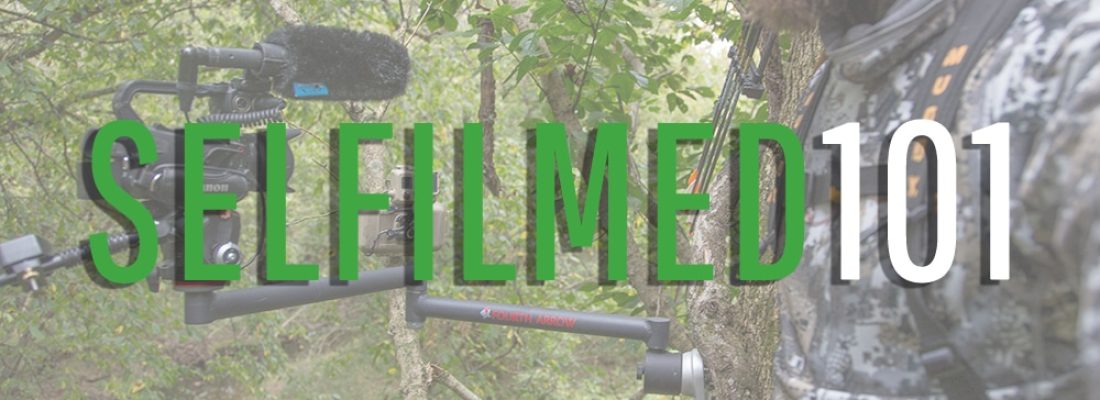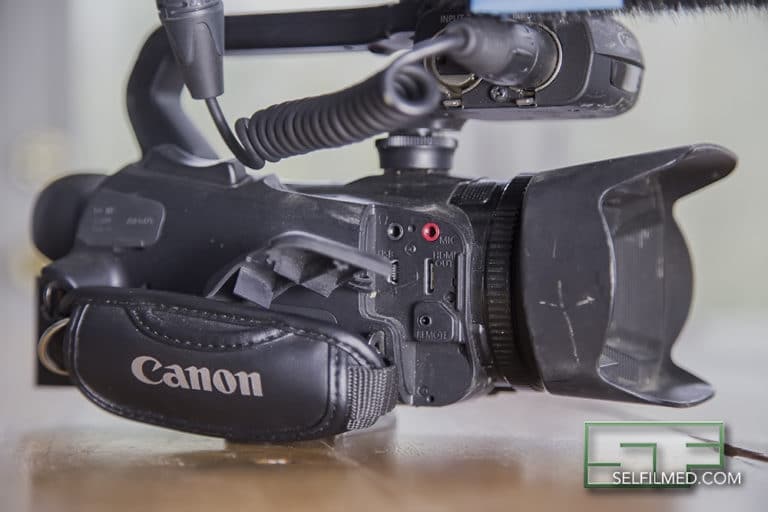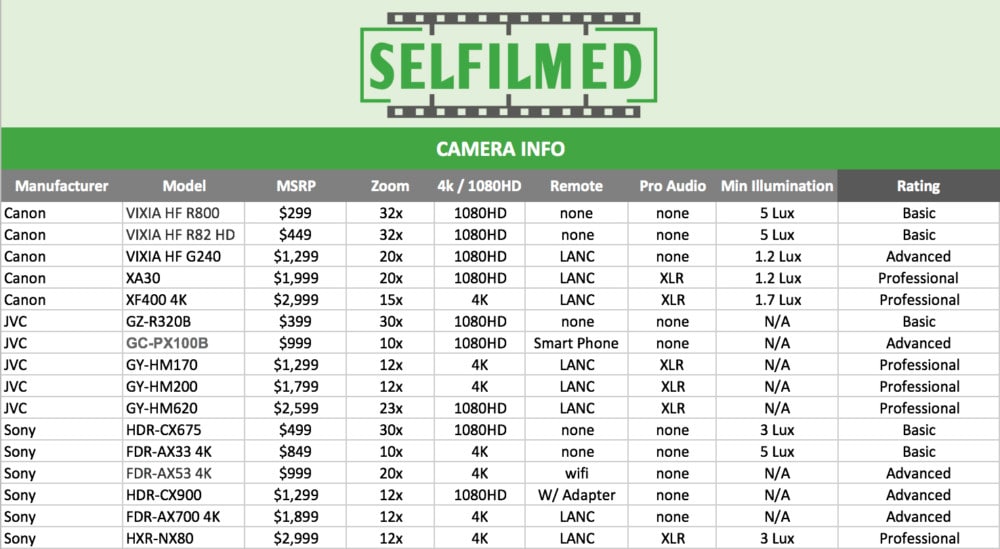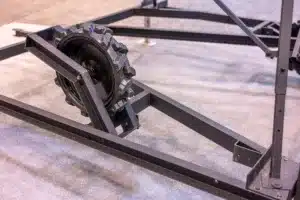No products in the cart.

365 Archery 3D Archery Targets
When folks enter a new industry, or even a new subsection of their industry, they usually dip their toe in by offering one or two


Without a doubt, the most important piece of equipment you’ll need to film your hunts is a video camera. It can be a daunting task to select the perfect camera for hunting given the number of cameras available and the wide range of features they come equipped with. However, there are a few key items we feel it is important to focus on when making your selection. Before we get started though, you need to ask yourself two questions. How serious are you about filming, and how much do you see yourself spending on a camera? The answers to these questions will help you decide which camera is going to fit your budget, and which will fit your needs as a self-filmer. Please note, all of the following features are in regards to a camcorder type camera. We do not feel that DSLR or Cinema type cameras are conducive for a primary camera for self-filming a hunt and have therefore been excluded from this article.
One of the biggest changes we’ve seen over the past couple of years, is the movement from standard high-definition (HD) resolution (1080 x 1920) to 4K video. 4K footage offers approximately four times the number of pixels over standard high-definition footage. The additional pixels offer many benefits…something we will have to touch on in a later article. While 4K is quickly becoming the new standard for professional video, there are still many great cameras on the market that record in 1080HD and would produce phenomenal SELFILMED footage. 4K is something you should certainly consider when purchasing a new camera, however it isn’t a deal breaker if the camera you chose doesn’t offer 4K resolution. A large number of families in the US do not have a 4K TV in their home, and not all home computers have the processing power to edit or even playback the 4K footage. 4K cameras are also on average going to run a little higher in price than something comparable that only records in 1080HD.
There are several inputs you should look for when purchasing your next video camera.
The most important of those, in our minds, is the remote control jack. This remote jack can either be a 2.5mm stereo mini “LANC” jack, or an “AV/R” jack found on several of the newer Sony cameras. There are several options out there, but we recommend purchasing a camera that supports Sony’s LANC standard as there are a wide variety of quality remote controls to select from. We will help you make the decision on what type of remote controller to get in a later chapter of SELFILMED 101.
Another important input jack is the audio input jack. These jacks come in either a 3 pin XLR input or a single 3.5mm input. The audio input jacks will allow you to capture better audio by allowing you to use a shotgun microphone rather than relying on the built-in microphone on your camera. XLR audio is a “balanced” audio signal connector and is the professional standard. 3.5mm jack audio is an “unbalanced” audio signal connector and is found on most camcorders (even on some with an XLR input). The difference being that balanced audio signals are more immune to interference than unbalanced audio. Your cell phone for example may cause interference with the audio signal being recorded on a 3.5mm jack microphone causing an abnormal hiss or humming sound on occasion.
A headphone jack is not near as important as the other two mentioned for a self-filming camera, but it can be very helpful when setting your audio levels.

LUX rating on a camera is somewhat subjective, but it is in essence a rating that describes the amount of light needed in order for your video camera to capture footage. The lower the LUX rating the better. You can certainly get away with a LUX rating of 2.5 or lower in many hunting situations, however in the first/last light opportunities we are so often presented with, a LUX rating of 1.5 or lower is essential to get quality footage. Pay particular attention to how this rating is shown on the camera specs. Some manufacturers will list this LUX rating in “low light” mode, which will allow you to record in almost pitch black conditions, however you will realize that they achieve this by reducing the shutter speed.Instead of producing a frame every 1/30th of a second, they may instead capture one frame every 1/2 second.
While it does not directly impact ones ability to capture footage in a hunting situation, it may also be beneficial to get a camera with an Infrared mode for doing interviews before daylight and after the sun sets on a successful hunt.
Most of the time when you look at the zoom specifications on a camera, you will see optical and digital zoom numbers. The optical zoom is the actual zoom capability of the lens, and this is the number you want to focus on. Digital zoom is a digital enhancement of the video which reduces the field of view of your video. Look for a camera with at least a 12x optical zoom, with a camera having a 15x optical zoom being more ideal. Many of the newer cameras on the market will have a 20x optical zoom and will meet the needs of most self-filmers out there.
I alluded to one of the benefits of a 4K camera is that it has nearly four times the number of pixels as a regular HD camera. If your final video product is going to be a standard HD (1080) video, you can use a 4K camera and achieve additional zoom when you need it while still maintaining sufficient video quality.

We cannot stress enough, the big broadcast quality cameras you see on TV are not the camera for you. Look for something that is capable of fitting into your backpack and does not weigh an arm and a leg. By the time you carry all of the necessary equipment you will need to film yourself, you will be thankful that you decided to choose a smaller and lighter camera. With a shotgun mic mounted on my current camera (Canon XA20), I have no issue with transporting all of my equipment to and from the stand. Additionally, the smaller camera you have, the less likely you will be detected by an animal when hunting.
Consider the features of a video camera that are most important to you. Decide what your filming goals are, and from there, determine the price range you are looking to purchase within. If you are merely filming hunts to save memories, there is no need to break the bank, and many of the features we discussed become preferential. But if you plan to share your hunts online or possibly on a TV network, it is important to understand there are some key functional and technological components that you need to consider when getting your next camera.
A graphic including only some of the cameras available on the market today and their key features is shown below. Additionally, we have labeled each camera as one of three categories: Basic, Advanced, and Professional. These three categories summarize a ranking of sorts we feel properly depicts the cameras overall abilities.
If you have any questions or would like further clarification on the information from this article, please visit our contact form and let us know. We love hearing from our readers, and as always, we welcome any feedback or tips you have to offer.

SELFILMED 101 Series:

When folks enter a new industry, or even a new subsection of their industry, they usually dip their toe in by offering one or two

Highlights of Greylight’s new releases for 2024 – the Daybreak Blind, Transformer Tower, and Nomad trailer.

With one of their coolest decoys to date, the NWTF floor was buzzing with talk of the new DSD Preening Hen decoy. It’s almost TOO
Don’t miss a thing! Subscribe below to keep informed on everything that’s happening with the folks at SELFILMED.com
One Response